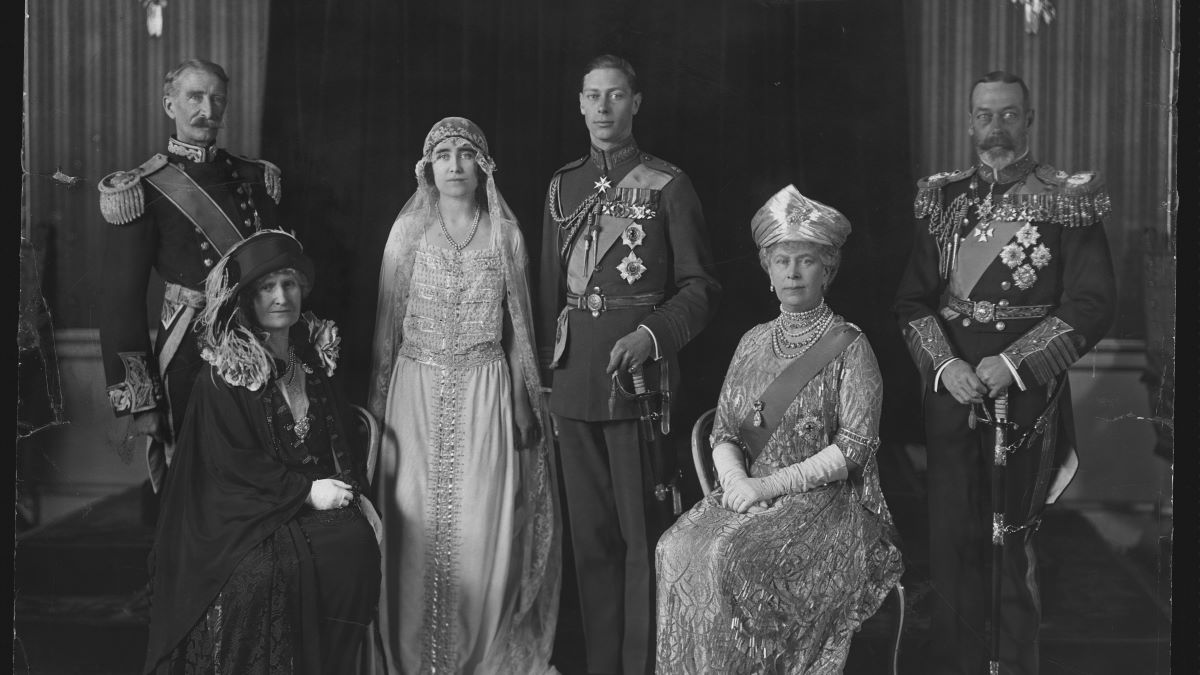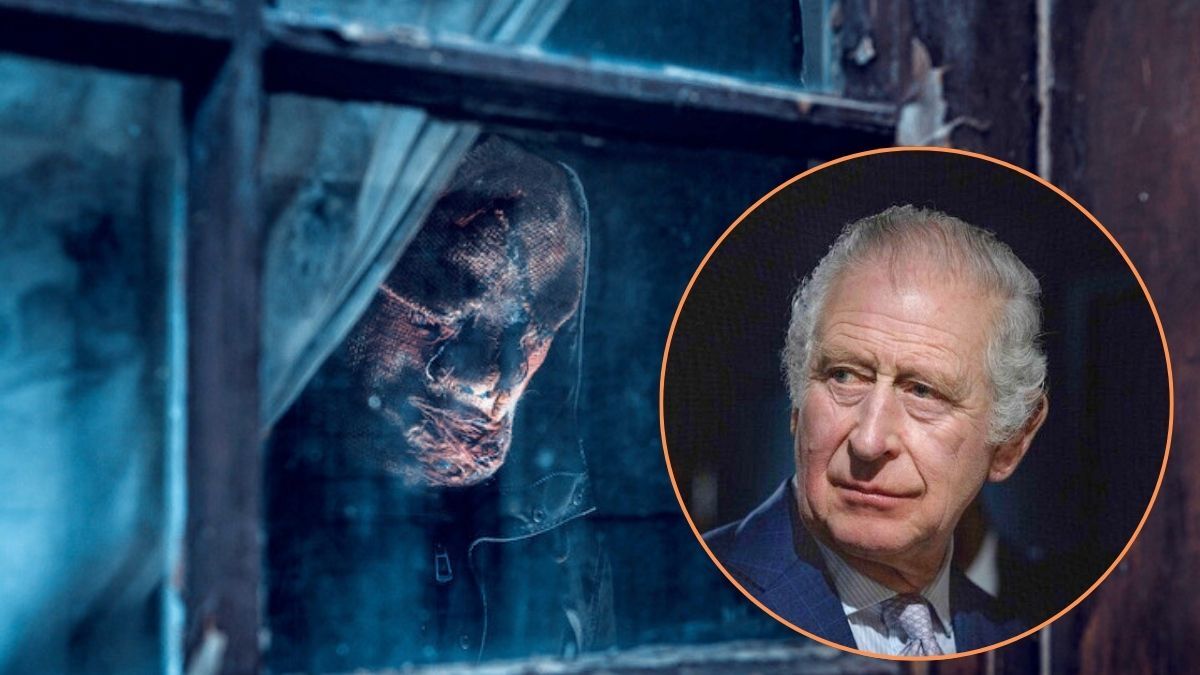In Glamis Castle, deep in Scotland, a woman is giving birth. Servants rush in and out of the room, bringing hot water and changing sweat-sodden sheets. It’s been a long and difficult labor, but the end is finally here. A ruddy-faced doctor awaits at the end of the bed. He’s seen a thousand births. He’s going to remember this one.
With one last agonizing push, the baby is born. Silence fills the room, punctuated only by the baby’s muffled mewls. The doctor turns white as a sheet. A servant girl vomits into her bucket. In a quavering tone, the mother asks “what’s wrong?” The baby is shown to her. Piercing screams fill the night. The Human Toad has entered our world.
This is the origin story of “The Horror of Glamis,” and if you think the modern British aristocrats got up to some depraved stuff, you haven’t seen anything yet. The parents in this story are Thomas Lyon-Bowes (Lord Glamis) and Charlotte Lyon-Bowes ⏤ the great-grandparents of Elizabeth Bowes-Lyon, mother to Elizabeth II. And the child, who would eventually become King Charles III’s lost fourth cousin?
Well, it gets weirder…
“Half frog, half man!!”
![Glamis Castle, 1937. Glamis Castle was the home of the Lyon family since the 14th century, though the present building dates largely from the 17th century. Glamis was the childhood home of Queen Elizabeth The Queen Mother, wife of King George VI. Card No 48 of 48 from Coronation Souvenir cigarette cards produced for Tournament Cigarettes. [RJ Lea Ltd, Manchester, 1937] (Photo by The Print Collector/Getty Images)](https://vip-develop.wegotthiscovered.com/wp-content/uploads/2024/04/GettyImages-558903007.jpg)
Soon after the 1821 birth, the Lyon-Bowes family went quiet. They made a low-key announcement that the child had died during birth, but local villagers quickly came to believe that the baby was alive, but being confined in secret captivity. Whispers began to spread, with a Miss L. Gilchrist describing a “half frog, half man!”
Dark rumors began to circulate in Victorian high society, with an 1865 story reporting that a workman at the castle chanced upon a hidden passage. Upon venturing inside he saw “something,” but after reporting it to his boss he was “pressingly encouraged to emigrate to Australia,” with his future funded by the Lord himself.
An account appeared in the journal Notes & Queries in 1908, explaining that:
“The story was, and is, that in the Castle of Glamis is a secret chamber. In this chamber is confined a monster, who is the rightful heir to the title and property, but who is so unpresentable that it is necessary to keep him out of sight and out of possession.”
A 20th-century history of the Bowes-Lyon family delved into the mysterious hidden child, who came to be known as the “Human Toad”, describing him as:
“The heir—a creature fearful to behold. It was impossible to allow this deformed caricature of humanity to be seen—even by their friends.… His chest an enormous barrel, hairy as a doormat, his head ran straight into his shoulders and his arms and legs were toylike [but] however warped and twisted his body, the child had to be reared to manhood.”
The child’s ultimate fate is unknown, though it’s commonly presumed that after his death, his hidden chamber was walled up and the family did their best to pretend he was never born. But that chamber may well still be there, and people have tried to find it.
Unearthing the forbidden past

Intrigued by rumors of a dark secret in her home, a later Countess took advantage of the Earl being absent on a hunting trip to conduct an experiment. Figuring the secret room might have a window, she and her friends tied white handkerchiefs to every window they could find, reasoning that they’d be able to see from the outside which windows were left bare.
The Earl returned earlier than planned and, when he realized what was happening, flew into a fury and tore down the handkerchiefs before any conclusions could be made. He divorced the Countess soon afterward.
In 1904, the New York Sun recounted the tale of a young doctor who discovered something unusual at Glamis:
A young doctor, who was staying in the castle professionally, found on returning to his bedroom that the carpet had been taken up and relayed. He noted that the mark of the carpet was different at one end of the room. By moving the furniture and raising the carpet, he laid bare a trap door, which he forced open and found himself in a passage. This passage ended in a cement wall. The cement was still soft, leaving the impress of a finger. He returned to his room—and next morning received a cheque for his services with the intimation that the carriage was ready to take him to the station for the first train.”
A later Lord, Claude Bowes-Lyon, alluded to the secret to his wife: “I have been into the room. I have heard the secret, and if you wish to please me you will never mention the subject again.” She appears to have known better than to enquire further. And, judging by modern investigations, it appears that whatever’s hidden inside the castle’s walls is either still locked in stone or has been covertly destroyed.
The real monsters

All this could simply be a tall tale, though viewers of The Crown will be familiar with the stories of Nerissa and Katherine Bowes-Lyon, who were born with learning disabilities in 1919 and 1926 respectively. The family originally stated the sisters had died in 1940 and 1961, only for it to be later revealed they’d been secretly placed inside an asylum and abandoned. The two sisters would spend their lives in anonymity, with Nerissa dying in 1986 and Katherine in 2014. Nurses testified that they never received visitors, that they didn’t receive any Christmas or birthday cards, and that no family attended their funerals. Nerissa wasn’t even given a gravestone.
But, let’s face it, all this breathless talk of human toads obscures the dowdy and depressing fact that these aristocrats were perfectly happy to torture and imprison their child merely for being born with a birth defect. I say it’s the parents who should have been walled up in a dank room and forgotten about. How can anyone treat a child like that?

